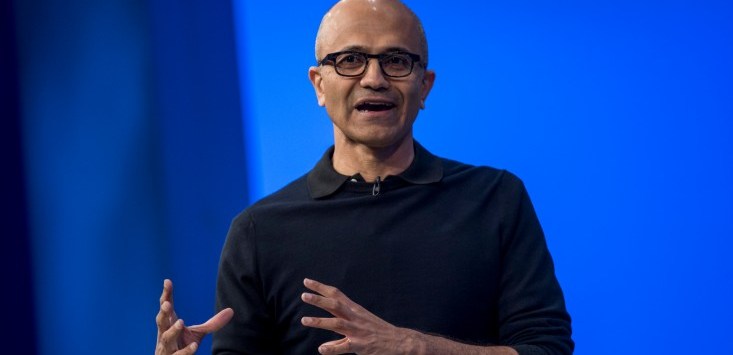
Microsoft chief executive Satya Nadella.
Much has been written about the benefits, and drawbacks, of working from home, but Microsoft boss Satya Nadella says he is focused on the wellness part of the productivity puzzle.
And that’s why Microsoft is working on adding a ‘commute’ function to its Teams video software, which is among the popular platforms businesses are using while employees are working remotely.
Microsoft Teams has already added a ‘Together Mode’ feature, that combines individuals’ video streams to make it look like everyone is seated together in a virtual auditorium.
The ‘commute’ function will be added at the start of next year, giving users the ability to book in meeting-free virtual commute times.
According to Fortune, the new function will suggest tasks to help workers wind down at the end of their workday.
This could include prompting users to list which tasks they completed that day, or write a to-do list for the next day. It could mean asking them to rate their day, or suggesting guided meditation via an integration with the Headspace app.
Nadella recently conducted a virtual visit to Australia, during which he told The Australian Financial Review that despite the benefits that come with virtual meetings, he is concerned about the loss of transitions that happen throughout a workday, even for himself.
“I never thought I would say this, but rituals like a commute are missing,” he said.
“Nobody thought they like their commute, except it is one of those times when you switch off, and those transitions matter.”
According to Microsoft research cited by the AFR, being able to use commute time to reflect on the day ahead or the one just completed can lead to a 12-15% increase in productivity for workers.
“I think you have to pick up some new habits where it will allow you to have those transitions, because mental fatigue or meeting fatigue is real,” Nadella said.
“We’ve not done studies with brain imaging, and the concentration with which I am watching someone on a video call is pretty immense.
“So I think we do need to think about wellness as part of the broader picture.
“One of my worries is we focus on productivity and burn people out, without thinking through the completeness of wellness as part of productivity,” he added.
NOW READ: What Kathmandu’s GM has learnt leading a multinational retailer from his son’s bedroom
NOW READ: Dreading going back to the workplace? You might have separation anxiety
COMMENTS
SmartCompany is committed to hosting lively discussions. Help us keep the conversation useful, interesting and welcoming. We aim to publish comments quickly in the interest of promoting robust conversation, but we’re a small team and we deploy filters to protect against legal risk. Occasionally your comment may be held up while it is being reviewed, but we’re working as fast as we can to keep the conversation rolling.
The SmartCompany comment section is members-only content. Please subscribe to leave a comment.
The SmartCompany comment section is members-only content. Please login to leave a comment.